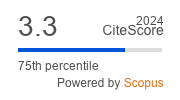Article | Open Access
Long-Term Care and Gender Equality: Fuzzy-Set Ideal Types of Care Regimes in Europe
| Views: | 3466 | | | Downloads: | 2072 |
Abstract: Recent changes in the organization of long-term care have had controversial effects on gender inequality in Europe. In response to the challenges of ageing populations, almost all countries have adopted reform measures to secure the increasing resource needs for care, to ensure care services by different providers, to regulate the quality of services, and overall to recalibrate the work-life balance for men and women. These reforms are embedded in different family ideals of intergenerational ties and dependencies, divisions of responsibilities between state, market, family, and community actors, and backed by wider societal support to families to care for their elderly and disabled members. This article disentangles the different components of the notion of ‘(de)familialization’ which has become a crucial concept of care scholarship. We use a fuzzy-set ideal type analysis to investigate care policies and work-family reconciliation policies shaping long-term care regimes. We are making steps to reveal aggregate gender equality impacts of intermingling policy dynamics and also to relate the analysis to migrant care work effects. The results are explained in a four-pronged ideal type scheme to which European countries belong. While only Nordic and some West European continental countries are close to the double earner, supported carer ideal type, positive outliers prove that transformative gender relations in care can be construed not only in the richest and most generous welfare countries in Europe.
Keywords: care regimes; familialization; fuzzy set ideal type analysis; gender equality; long-term care; migrant care work
Published:
© Attila Bartha, Violetta Zentai. This is an open access article distributed under the terms of the Creative Commons Attribution 4.0 license (http://creativecommons.org/licenses/by/4.0), which permits any use, distribution, and reproduction of the work without further permission provided the original author(s) and source are credited.


